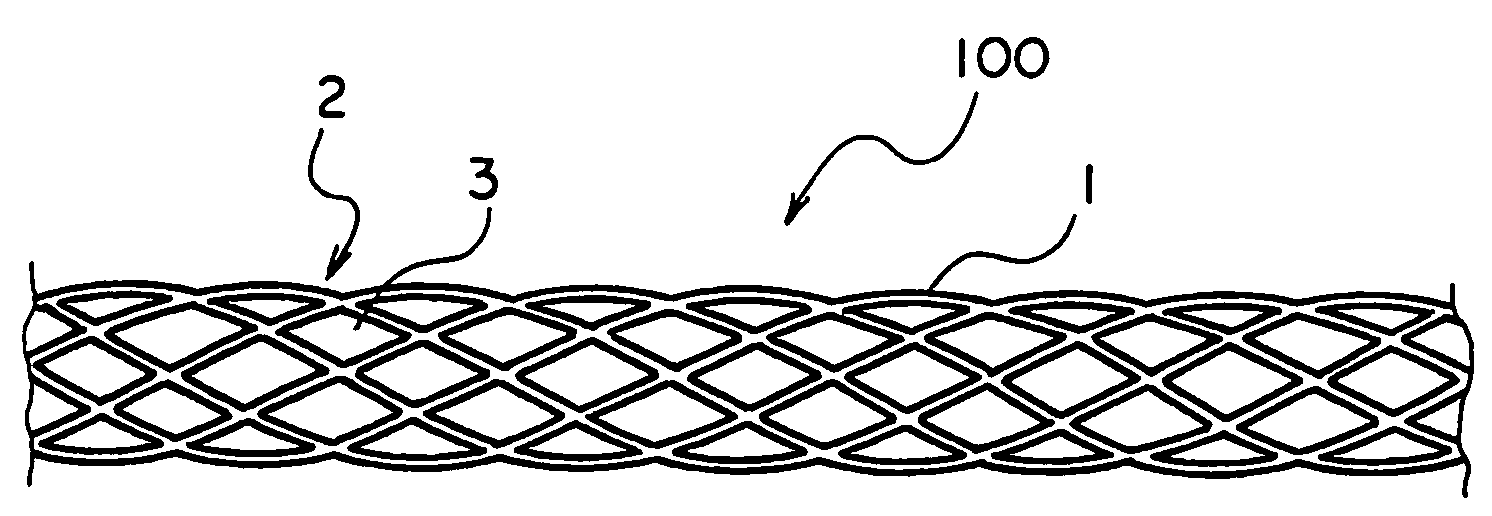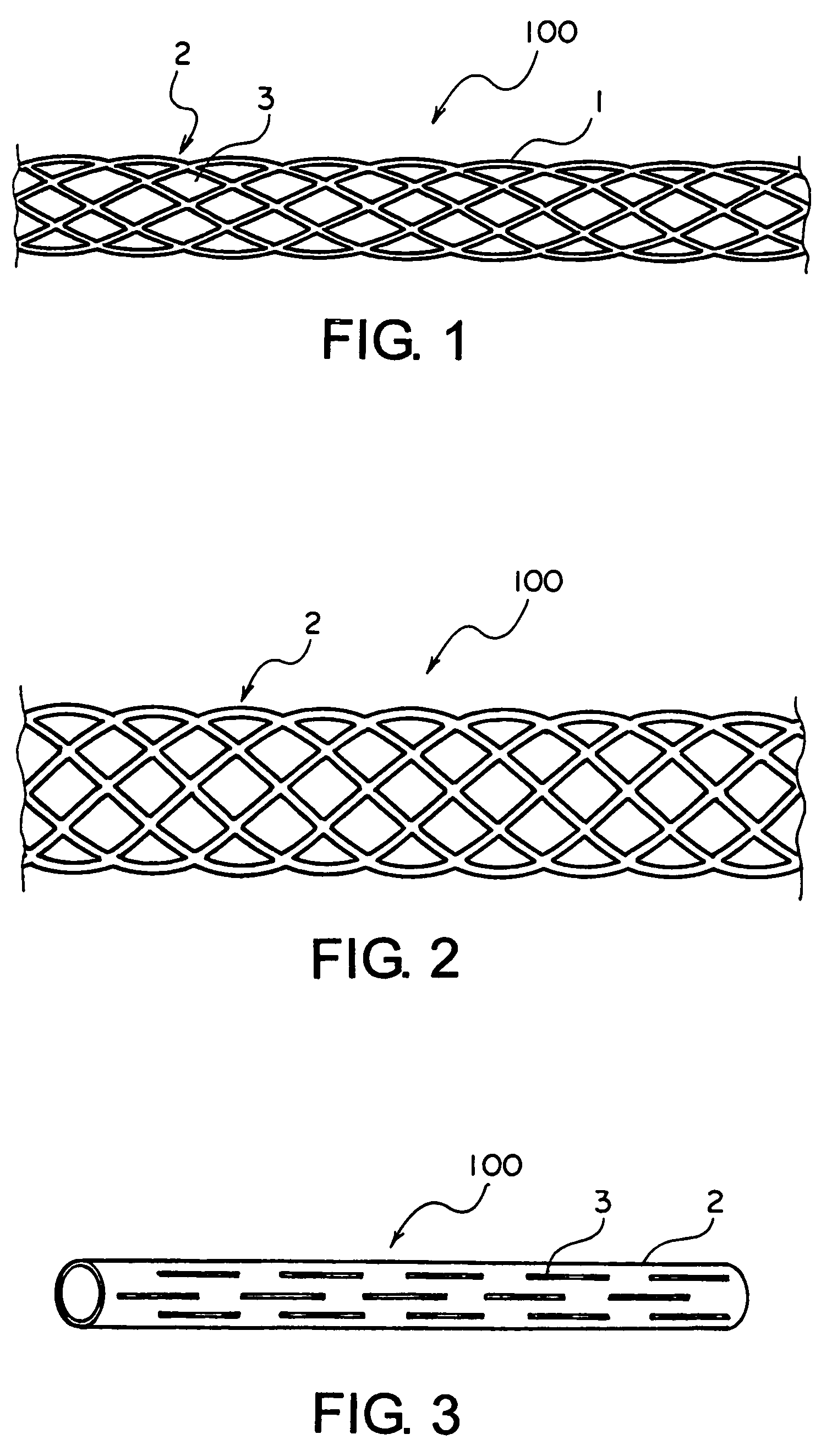Balloon expandable superelastic stent
a superelastic stent, balloon technology, applied in the field of balloon expandable superelastic stents, can solve the problems of difficult use of superelastic stents in blood vessel systems such as coronary systems, insufficient positioning, and inability to achieve the desired positioning, etc., to achieve the effect of convenient placement not only
- Summary
- Abstract
- Description
- Claims
- Application Information
AI Technical Summary
Benefits of technology
Problems solved by technology
Method used
Image
Examples
first embodiment
[0035]Each of tubes of φ5.0 mm of the Nos. 3 and 4 alloys was processed into a slotted shape illustrated in FIG. 1 by laser machining to obtain a stent 100 of a The stent 100 has a shape as a mesh tube 2 formed by a mesh wire 1 having slots 3. The stent 100 was subjected to shape memory treatment. The stent 100 having the shape as the mesh tube 2 was mechanically expanded radially in a dry-ice / alcohol bath at −50° C. into φ5.5 mm (ε=10%) and φ5.75 mm (ε=15%) as illustrated in FIG. 2. Then, the recovery temperature was examined. The result is shown in Table 2. Each tube thus expanded exhibited a temperature characteristic substantially similar to the test result of the above-mentioned wire material. It is therefore understood that, also in the shape of the stent, elevation of the shape recovery temperature by imposing the strain is achieved in the manner similar to the wire material.
second embodiment
[0036]Next, as the stent 100 of a second embodiment, the tube 2 of φ1.2 mm of the No. 4 alloy was provided with the slots 3 in a staggered fashion in a longitudinal direction and in a circumferential direction, as illustrated in FIG. 3. Thereafter, the tube 2 was radially expanded into φ5.0 mm to obtain a mesh tube and subjected to shape memory treatment at 600° C. Then, the tube2 was radially contracted into φ1.2 mm and subjected to swaging into φ1.05 mm (the strain of about 13%). This tube had a shape recovery temperature of 55° C. Thus, an appropriateness of such strain imposing technique was confirmed.
[0037]Further, the slotted tube of φ1.2 mm of the No. 4 alloy in FIG. 3 was radially expanded into φ5.5 mm and subjected to heat treatment. Thereafter, the tube was radially contracted into φ1.2 mm again (the maximum strain of a slot angle was about 10%). The shape recovery temperature was examined and was about 40° C.
[0038]
TABLE 2expandedshape recovery behaviordiametershape recove...
PUM
| Property | Measurement | Unit |
|---|---|---|
| elongation strain | aaaaa | aaaaa |
| temperature | aaaaa | aaaaa |
| elongation strain | aaaaa | aaaaa |
Abstract
Description
Claims
Application Information
 Login to View More
Login to View More - R&D
- Intellectual Property
- Life Sciences
- Materials
- Tech Scout
- Unparalleled Data Quality
- Higher Quality Content
- 60% Fewer Hallucinations
Browse by: Latest US Patents, China's latest patents, Technical Efficacy Thesaurus, Application Domain, Technology Topic, Popular Technical Reports.
© 2025 PatSnap. All rights reserved.Legal|Privacy policy|Modern Slavery Act Transparency Statement|Sitemap|About US| Contact US: help@patsnap.com


